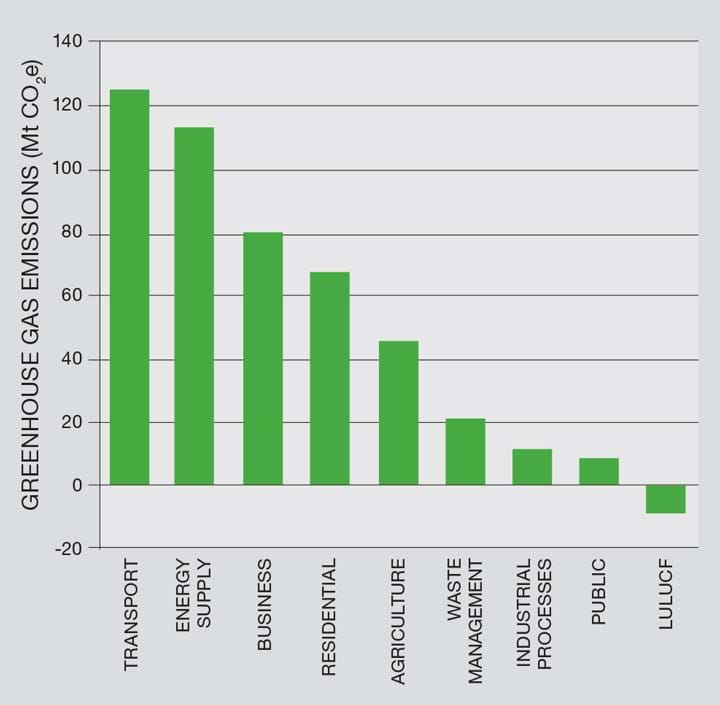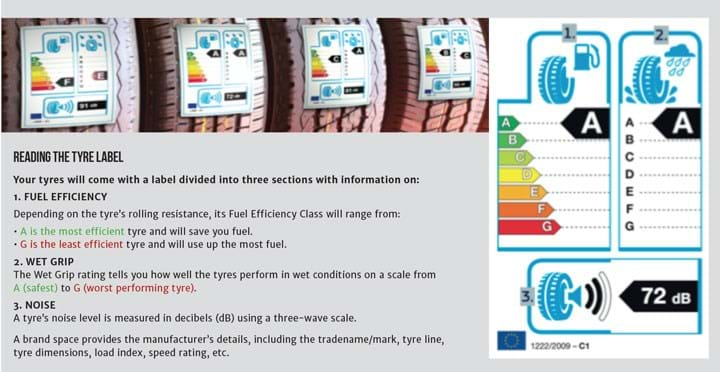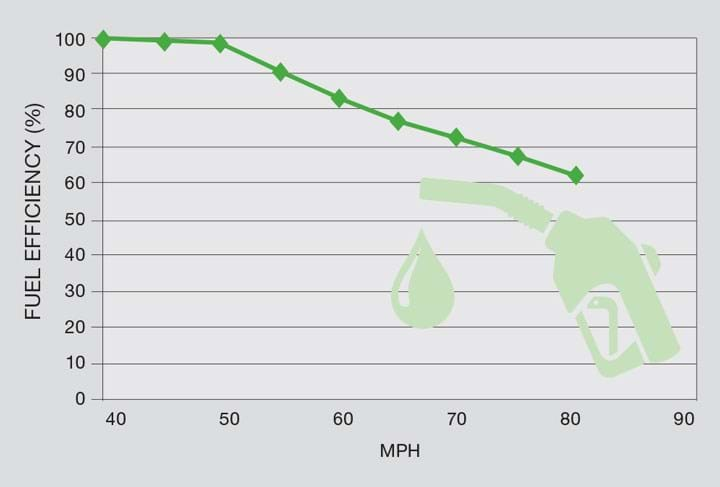Energy Saviours: Part 4
Tom Baxter explains why slowing down is better for the planet
IN MY previous Energy Saviours articles (issues 927, 932 and 939) I addressed energy efficiency opportunities associated with many of the common unit operations and equipment designed and operated by chemical engineers. In this article I cover a less obvious area for greenhouse gas (GHG) reduction through energy efficiency: vehicle tyre design and manufacture – an industry sector where chemical engineers are pivotal.
As can be seen in Figure 1, which shows the main sectors contributing to GHG emissions, the largest UK contributor is transport. It is therefore self evident that decarbonising transport will be key to meeting the UK’s net zero target.
The largest UK contributor to GHG emissions is transport...It is therefore self evident that decarbonising transport will be key to meeting the UK’s net zero target
Decarbonising transport got me thinking about driving in the US in the early 1990s where a speed restriction of 55 mph (~88 km/h) was enforced. This was the National Maximum Speed Law, drafted in response to oil price spikes and supply disruptions during the 1973 oil crisis and it remained the law until 1995. Why 55 mph? It is approximately where automobiles achieve optimal fuel efficiency – more on this later. The law was enforced to reduce US reliance on oil imports; it was not related to the Climate Crisis.
Whilst the law was unpopular, it did result in a reduction in fuel consumption. It should also be recognised that a reduction in transport fuel demand will result in less energy required by both the oil producers and the oil refineries – both are significant sources of GHG production. Hence, speed limit enforcement is a triple win.

Forces on an automobile
A force balance on a moving car is analogous with fluid flow in a pipe. There are five main forces acting on a vehicle that affect fuel efficiency:
- gravity – elevation changes (as in a pipe);
- inertia – velocity changes/acceleration (as in a pipe);
- internal friction forces – transmission system (efficiency of pump or compressor);
- aerodynamic drag – resistance to movement through air (viscous fluid drag); and
- rolling friction – energy consumed by tyres (pipe friction factor).
GRAVITY
By considering potential energy changes it is evident that a vehicle will use more fuel on an incline.
INERTIA
To change a vehicle speed (acceleration and deceleration) there is a resistive force that must be overcome.
INTERNAL FRICTION
Internal frictional force corresponds to friction in the drive train, in the differential and wheel bearings together with brake drag (when the brakes are not being applied).
AERODYNAMIC DRAG
Aerodynamic drag results from a vehicle’s movement through air. It depends on the size and shape of the vehicle, the frontal area, drag coefficient and travelling speed. The frontal area corresponds to a projection of the vehicle front profile onto a vertical plane. For a passenger car it is typically 2.0-2.5 m2 (https://bit.ly/3cdvSeb).
The aerodynamic drag coefficient relates to an object’s resistance to movement. The lower the coefficient, the more aerodynamic the object.
Consider Figure 2, this illustrates two vehicle shapes with the same frontal area but clearly they would have differing drag coefficients. The drag coefficient for the wedge shape (B) would be much lower than the rectangle.

Most passenger cars currently on the market have a drag coefficient between 0.28 and 0.35. A figure of 0.35 is a characteristic of cars with more of a box shape. Some new car models have significantly improved drag coefficients. For example the Tesla 2017 Model 3 has a drag coefficient of 0.23 (https://bit.ly/3cdwb8P).
Aerodynamic drag can be determined from Equation 1.

This is the same theory as used in Stokes law – the resistive force on an object moving through a viscous fluid.
ROLLING FRICTION
As stated earlier, chemical engineers are key to the design and manufacture of vehicle tyres. Chemical engineers have developed tyre formulations that deliver visco-elastic properties of the rubber – a fundamental property of the tyre. The formulation of the rubber and how the tyre is manufactured are both key to tyre tread properties (https://bit.ly/2XtmU8g). Tread patterns determine road holding and fuel efficiency.
Rolling friction is defined as the energy consumed by a tyre per unit of distance covered. The main source of energy dissipation is the visco-elasticity of the tyre material. Visco-elastic materials lose energy in the form of heat whenever they are being deformed. The energy thus lost results in a force that resists the tyre’s rotation and consequently the vehicle’s movement.
Rolling friction can be determined from Equation 2.

Rolling friction coefficients are obtainable from tyre manufacturers as prescribed by the European Union (https://bit.ly/2V1gICN). These are shown in Figures 3 and Table 1.


The EU Fuel Efficiency designation has a rolling friction coefficient for three tyre types:
C1 Car tyres
C2 Van tyres
C3 Lorry and bus tyres
Rubber formulations have been developed by chemists and chemical engineers to provide smooth driving, high fuel economy and grip in wet and snowy conditions. The complexity of the tyre material is reviewed by the Royal Society of Chemistry (https://rsc.li/2VjeptY) where its states: “Modern tyre rubber is a crosslinked polymer matrix which typically contains only 10% natural rubber (cis-1,4-polyisoprene). A range of polymers including natural and synthetic polyisoprene, polystyrene, polybutadiene and poly(isoprene–isobutylene) are blended with reinforcing fillers (carbon black or silica), sulfur (the crosslinking agent), antioxidants and processing oils.”
Tread patterns are commonly either symmetrical or directional.
Symmetrical tyres are the most common, having continuous ribs across the face of the tread. They are the most fuel efficient but are not so effective in wet or snowy conditions.
Directional tyres often have lateral chevron-shaped grooves across the tyre tread. The V-shape resists aquaplaning by displacing water more efficiently. They also provide extra traction but at the cost of fuel efficiency.
There is a third pattern – asymmetric – but this is generally only used in high performance cars.
For a vehicle travelling at constant speed on a flat road, gravity and inertia forces are zero. Transmission losses are comparatively minor and the main forces to be overcome are friction and drag.
Power consumption with speed
The US Department of Energy and Environmental Protection Agency have undertaken a significant amount of work on fuel efficiency and have produced a guide (https://bit.ly/2ybVaKH) for US drivers. Although it will be vehicle specific, typical figures are given for fuel economy over a range of speeds. Figure 4 uses this data.
From Figure 4 it is clear that the optimal highest speed for fuel economy is around 45–50 mph. (Note that at low speeds, gearing also impacts fuel economy.) Here we are seeing the two main resistive forces of rolling friction and aerodynamic drag at play. At lower speeds, rolling friction, which is independent of speed, dominates (see Equation 2). Aerodynamic drag is proportional to speed squared but it is not significant at low speeds (see Equation 1). However, as speed increases, it becomes the dominant resistance to movement above 50 mph. Hence the shape of Figure 4.
In addition to fuel economy, driving at approximately 50 mph will reduce other harmful emissions – NOx, SOx, unburned hydrocarbons and particulates. One could argue it will also be safer, I’m sure, though the loss prevention community might have some interesting additional insight here.

Should we therefore adopt a reduced maximum speed law in the UK? It will cost little to implement, would have an immediate impact on the UK’s carbon footprint and would save consumers on their forecourt bills
Should we therefore adopt a reduced maximum speed law in the UK? It will cost little to implement, would have an immediate impact on the UK’s carbon footprint and would save consumers on their forecourt bills. Like the public reaction in the US, it is likely to be very unpopular, but one could argue that we all have to shoulder some inconvenience and responsibility for delivering net zero.
How could we use the reduced speed limit to further contribute to decarbonisation? That could be facilitated by allowing electric- and hydrogen-powered vehicles, using energy from renewable sources, to travel at existing speed limits.
To my mind that would provide a very real incentive for many road users to transition from fossil fuel based transport to low carbon options of hydrogen and battery. A transition we know is essential. It is interesting to note that Austria has recently implemented such a law (https://bit.ly/2Vo99oT).
It could be a case of less speed more haste to net zero.
Recent Editions
Catch up on the latest news, views and jobs from The Chemical Engineer. Below are the four latest issues. View a wider selection of the archive from within the Magazine section of this site.




